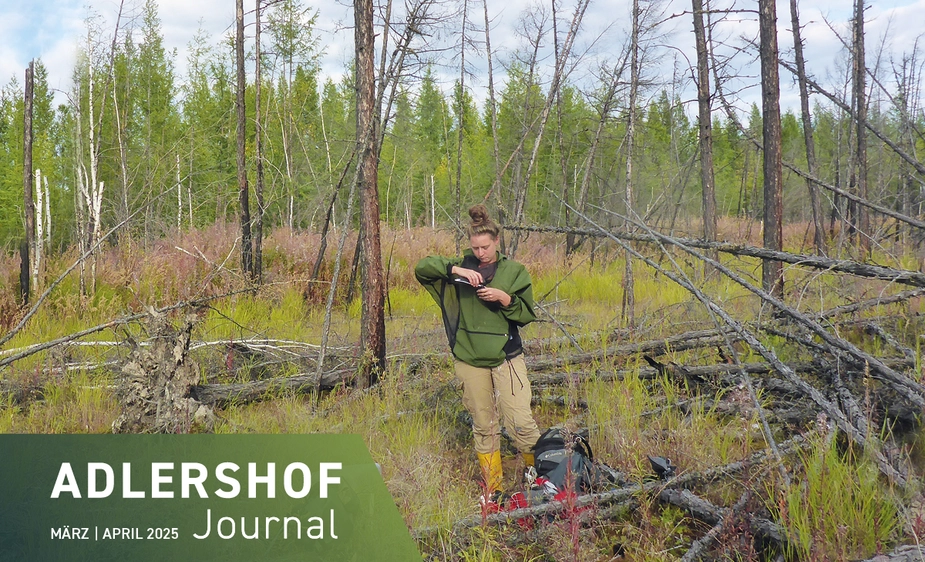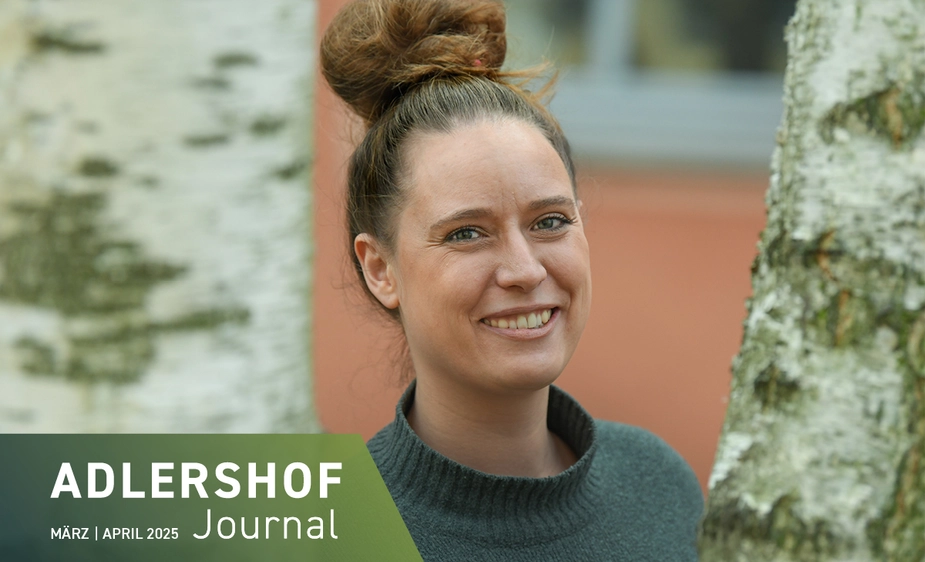Stünzi’s sense of snow
HU scientist Simone Maria Stünzi studies the vegetation in permafrost soils
At the Earth Observation Lab of Humboldt-Universität zu Berlin (HU), scientist Simone Maria Stünzi investigates how vegetation interacts with permafrost soil and how these processes are changing against the backdrop of a changing climate.
An indoor palm and two cacti sit on her desk, with an evergreen trailing plant perched on a shelf above. Walking into Simone Maria Stünzi’s office, you wouldn’t necessarily get the impression that her research work is on boreal forests in permafrost regions. But the topic hit the 31-year-old like an unexpected cold spell, if you will.
A Zurich native, she also graduated from school and university there. She completed her BA with a focus on physical geography and remote sensing before moving on to a master’s in environmental sciences. At the beginning of writing her master’s thesis, she stumbled upon what would become her research field: “I began analysing satellite data from Siberia, where large wildfires frequently occurred,” she remembers. What causes these fires to break out so often in continental permafrost regions, and what are their effects?
To explore these questions further, she moved to Berlin in 2018, to conduct her doctoral research at the Alfred Wegener Institute (AWI), Helmholtz Centre for Polar and Marine Research in Potsdam. Her focus shifted from remote sensing to developing a numerical permafrost-vegetation model. Stünzi has now worked as a postdoctoral researcher since August last year, working in the research group of Professor Patrick Hostert at the HU Earth Observation Lab in Adlershof, with a project she set up with funding from the German Research Foundation.
Permafrost regions—including those in Alaska, Canada, Greenland, and Siberia—are characterised by soil that is permanently frozen. Nearly a quarter of these permafrost areas are covered by forests. “It’s like a freezer that preserves material that has remained almost unchanged for thousands of years,” explains Stünzi. Varying in depth from a few centimetres to several metres, there is a seasonal layer of soil on top. This active layer thaws during summer, allowing trees to take root—trees that are remarkably well adapted to extreme climatic conditions. They also have a protective function. In the summer, they provide shade and cool the ground; in the spring, they influence the snowmelt, which can lead to a slight warming effect and alter the water balance. Thus, vegetation and permafrost soil are deeply interconnected. It is precisely this interaction that is the subject of Stünzi’s research work. “My focus is on the global climate and process understanding,” she says. “The interplay between forests and permafrost soil has never been properly quantified before.”
Her process-based modelling allows her to explore future scenarios: How will this relationship shift as global temperatures rise and precipitation amounts decrease? What happens if drought stress intensifies, increasing the severity of wildfires? What effect will this have on permafrost soil? “When we know that forests reduce the active layer by two thirds, this has implications for regional climate projections.” When permanently frozen ground thaws more deeply due to forest loss, previously stored carbon can be released into the atmosphere, further accelerating global warming.
Her methodology is a combination of modelling, analysis of satellite data, and field research with the overarching goal of improving climate projections. She first travelled to Yakutia during her master’s and later returned for two further research expeditions. Meanwhile, field research in Siberia has been rendered impossible by Russia’s war against Ukraine. In the past few years, she has travelled to Greenland to perform drillings, build measurement stations, and “dig around in the soil”. Stünzi enjoys combining different methods. Satellite data provide a broad perspective, modelling helps to better understand processes and upscale input data, while the fieldwork ensures validation—and provides a welcome change of scenery. In late August, the scientist will again leave her office with the potted plants and embark on another research trip. This time to Trail Valley Creek in northwestern Canada.
Heike Gläser for Adlershof Journal

